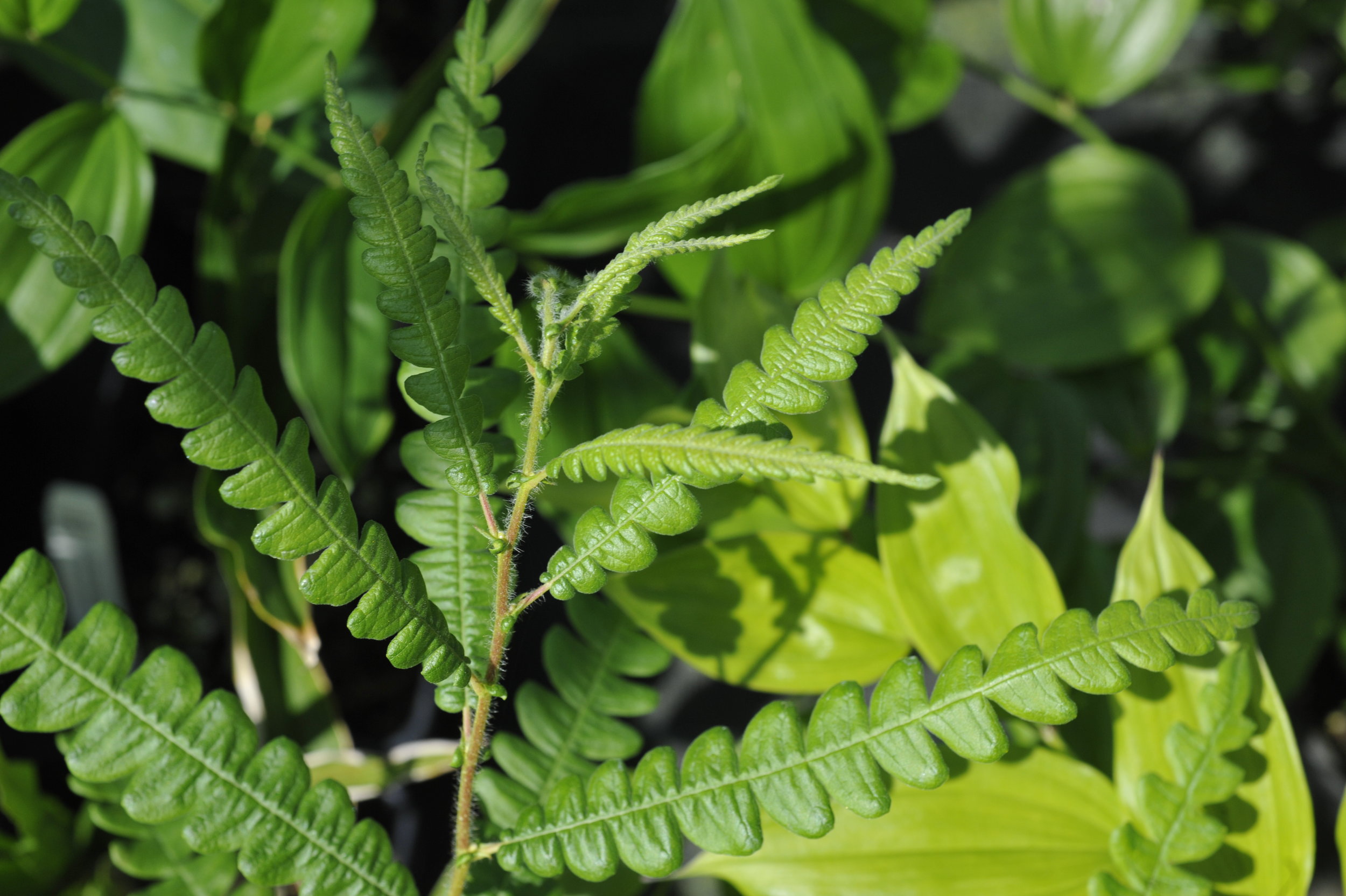Photo by Stan Shebs licensed under CC BY-SA 3.0
There is something satisfying about saying "Krameria." Whereas so many scientific names act as tongue twisters, Krameria rolls of the tongue with a satisfying confidence. What's more, the 18 or so species within this genus are fascinating plants whose lifestyles are as exciting as their overall appearance. Today I would like to give you an overview of these unique parasitic plants.
Commonly known as rhatany, these plants belong to the family Krameriaceae. This is a monotypic clade, containing only the genus Krameria. Historically there has been a bit of confusion as to where these plants fit on the tree of life. Throughout the years, Krameria has been placed in families like Fabaceae and Polygalaceae, however, more recent genetic work suggests it to be unique enough to warrant a family status of its own.
Regardless of its taxonomic affiliation, Krameria is a wonderfully specialized genus of plants with plenty of offer the biologically curious among us. All 18 species are shrubby, though at least a couple species can sometimes barely qualify as such. They are a Western Hemisphere taxon with species growing native as far south as Paraguay and Chile and as far north as Kansas and Colorado. They generally inhabit dry habitats.
Photo by Stan Shebs licensed under CC BY-SA 3.0
As I briefly mentioned above, most if not all of the 18 species are parasitic in nature. They are what we call "hemiparasites" in that despite stealing from their hosts, they are nonetheless fully capable of photosynthesis. It is interesting to note that no one (from what I have been able to find) has yet been able to raise these plants in captivity without a host. It would seem that despite being able to photosynthesize, these plants are rather specialized parasites.
That is not to say that they have evolved to live off of a specific host. Far from it actually. A wide array of potential hosts, ranging from annuals to perennials, have been identified. What I find most remarkable about their parasitic lifestyle is the undeniable advantage it gives these shrubs in hot, dry environments. Research has found that despite getting a slow start on growing in spring, the various Krameria species are capable of performing photosynthesis during extremely stressful periods and for a much longer duration than the surrounding vegetation.
Photo by mlhradio licensed under CC BY-NC 2.0
The reason for this has everything to do with their parasitic lifestyle. Instead of producing a long taproot to reach water reserves deep in the soil, these shrubs invest in a dense layer of lateral roots that spread out in the uppermost layers of soil seeking unsuspecting hosts. When these roots find a plant worth parasitizing, they grow around its roots and begin taking up water and nutrients from them. By doing this, Krameria are not limited by what water or other resources their roots can find in the soil. Instead, they have managed to tap into large reserves that would otherwise be locked away inside the tissues of their neighbors. As such, the Krameria do not have to worry about water stress in the same way that non-parasitic plants do.
Photo by Stan Shebs licensed under CC BY-SA 3.0
By far the most stunning feature of the genus Krameria are the flowers. Looking at them it is no wonder why they have been associated with legumes and milkworts. They are beautiful and complex structures with a rather specific pollination syndrome. Krameria flowers produce no nectar to speak of. Instead, they have evolved alongside a group of oil-collecting bees in the genus Centris.
One distinguishing feature of Krameria flowers are a pair of waxy glands situated on each side of the ovary. These glands produce oils that female Centris bees require for reproduction. Though Centris bees are not specialized on Krameria flowers, they nonetheless visit them in high numbers. Females alight on the lip and begin scraping off oils from the glands. As they do this, they inevitably come into contact with the stamens and pistil. The female bees don't feed on these oils. Instead, they combine it with pollen and nectar from other plant species into nutrient-rich food packets that they feed to their developing larvae.
Photo by João Medeiros licensed under CC BY 2.0
Following fertilization, seeds mature inside of spiny capsules. These capsules vary quite a bit in form and are quite useful in species identification. Each spine is usually tipped in backward-facing barbs, making them excellent hitchhikers on the fur and feathers of any animal that comes into contact with them.







